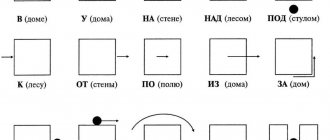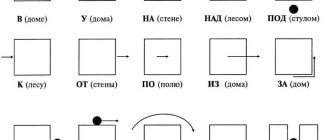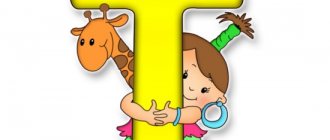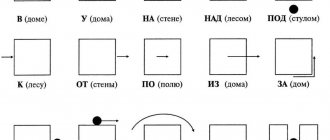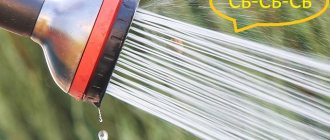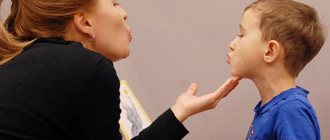June 14, 2016
Averyanova Sveta
As the child grows up, new words appear in his speech, the number of which increases every day. Parents, undoubtedly, rejoice at the achievements of their child, while not paying due attention to the pronunciation of certain or other letters.
This is how the child develops a habit of incorrect pronunciation of words, which will be difficult to correct in the future. Therefore, it is necessary to pay due attention to correcting this defect even when it is just beginning to be traced.
Reasons for incorrect sound pronunciation
There are several reasons why a baby may not be able to make sounds:
- Short frenulum of the tongue - you will have to cut it, because it does not allow the tongue to rise up, which is necessary for the pronunciation of sibilants;
- High narrow hard palate;
- Abnormal structure of teeth and jaws - gaps between teeth, cleft palate and upper lip;
- Features of the bite: open, deep with protrusion.
In these cases, consultation with an orthodontist is necessary. But in most cases, children simply do not understand how to pronounce the sound correctly or copy the speech of other children, for example in kindergarten. In this case, speech therapy exercises “w” and gymnastics - articulation and breathing - will help.
Why doesn't the child pronounce the letter "w"?
The sound “zh” is very difficult to pronounce. Therefore, there are often cases when this defect in a child remains neglected. Incorrect pronunciation of hissing and whistling sounds (for example, “zh” and “sh”) at the age of 5-6 years is a very common phenomenon, which is called functional dyslalia.
As a rule, it does not go away on its own. You need to consult a speech therapist. The reasons can be a variety of factors, both psychological or social, and physiological, for example, heredity, developmental disorders, pedagogical neglect, etc.
For any speech defect in children, it is necessary to contact specialists if the parents were unable to eliminate it themselves, because in the future it will be much more difficult to treat the neglected effect. You need to be patient, consult with a speech therapist, and your baby will definitely pronounce the letter “w”.
Articulation gymnastics for making the sound “zh”
Do the exercises daily, preferably sitting in front of a mirror. Conducted in a playful manner. First, the child is shown the correct articulation of sound:
- lips are rounded and pushed forward;
- we close or bring our teeth together;
- we raise the tip of the tongue to the alveoli, but do not press it against them;
- We press the side walls of the tongue against the upper molars;
- As you exhale, a warm air stream should pass through the middle of your tongue.
The sound “zh” is sonorous and is pronounced with a voice. To learn this, you need to perform this set of exercises.
First (initial) exercise. Instructions: smile, show your teeth, put them on top of each other like a fence. Say “and” to yourself and count to 10.
Exercise No. 2. Take the starting position, stretch your lips forward, round them, as if you want to say “oh,” count to 10.
Exercise No. 3. Spread your tongue below, resting the tip against your lower teeth. Smile, open and close your mouth. Repeat up to 10 times.
Exercise No. 4. Flatten your tongue and don't move it. He should not touch his lower lip or tremble. The lower teeth are exposed. Count to 10.
Exercise No. 5. Open your mouth so your teeth are visible. Stroke the roof of your mouth with the tip of your tongue - back and forth.
Exercise No. 6. Spread your tongue and place it on your lower lip. Lick your upper lip from top to bottom, while moving your tongue behind your teeth. Don't move your jaw.
Exercise No. 7. Smile and open your mouth slightly, spread your tongue and place its tip on your upper lip. Press the side surfaces of the tongue so that a groove is formed in the middle. Make a movement as if you are blowing fluff from the tip of your nose. Make sure the air goes down the middle of your tongue.
Incorrect pronunciation of sound: types of sibilant sigmatism
Sometimes parents of a child who has problems with sound pronunciation turn to a speech therapist late for help. Or they even think that the baby has no problems with speech, due to the fact that they do not always know how this or that sound should be reproduced correctly. Each sound has its own articulatory position. By ear, it may seem that the child seems to pronounce it (doesn’t miss it or replace it, just “F” is heard), but at the same time he doesn’t always articulate it correctly.
The work is carried out individually, depending on the characteristics of the violation. There are several types of hissing sigmatism, characterized by incorrect position of the organs of the speech apparatus:
- Lower (the sound is softened).
- Rear-lingual (in this case, the position of the articulatory organs is as with the sounds G, X; this leads to the fact that the sound Z is pronounced noisily).
- Buccal (in this case, the tongue is motionless, the cheeks are puffed out, the teeth are closed, and a dull, booming sound is formed).
Speech therapy breathing exercises
With correct articulation of the sound “zh”, a warm air stream passes through the middle of the tongue when the baby exhales air. If the pronunciation is incorrect, this stream does not exist. Therefore, the goal of gymnastics is to teach this to a child.
When performing exercises, you need to watch your body: your shoulders are motionless, your chest does not rise much when you inhale, and when you exhale, it falls moderately. You need to inhale through your mouth, the inhalation is soft and short, the exhalation is slow and smooth. After inhaling, we immediately begin to speak (but while exhaling).
Here are breathing exercises.
Exercise No. 1. Children are asked to blow a paper snowflake off their palm. Whoever flies further, well done.
Exercise No. 2. Take a strong, intermittent exhale, as if extinguishing a candle, and at the same time say “fuuuu.”
Exercise No. 3. Place a bottle with a narrow neck to your lower lip and blow. There should be some noise.
Exercise No. 4. Smile, hide the tip of your tongue behind your lower teeth, and lift the back of your tongue up. Exhale.
Articulation
The key to good pronunciation is the correct articulation of the sounds sh and zh. To teach a child to pronounce the letters sh and z correctly, it is necessary to study one method of articulation, since the speech apparatus works almost identically when pronouncing both letters. So, in order to correctly pronounce the letter w, it is necessary to work with the articulatory apparatus as follows:
- the baby's lips should be slightly pushed forward in the shape of a tube;
- the tip of the tongue is raised to the palate so that a small gap remains between them;
- the lateral edges of the child’s tongue are pressed against the upper outer teeth, giving the tongue the shape of a cup;
- a stream of air easily passes through the unused vocal cords, creating the necessary sound.
In order to understand how to teach a child to say the letter z, it is necessary to resort to the articulation described above, while connecting the vibrations of the vocal cords. Regular exercises for making sounds are very important. These exercises can be done with a speech therapist or at home.
Staging the sound “zh” step by step
The sound production lesson takes place in 3 stages. It is carried out in the form of a game in a group of 4 – 5 children.
At the first stage, children are shown how the tongue should be positioned when pronouncing a sound.
The second stage of sound production
The speech therapist finds out how the child pronounces the sound “zh” and what errors in articulation he makes. At the same stage, articulation and breathing exercises are carried out and they begin to practice the sound “zh” (provided that the students pronounce “sh”). Most children begin to say it by imitation - this is the simplest method of making the sound “zh”.
Exercise "Bug". The children are shown a picture of a beetle and asked to remember how the bugs flew and buzzed in the summer. Then they ask you to repeat this sound.
Exercise "Ball". Children are asked to imitate the hissing sound when the balloon bursts. And then - say the same thing, only with a voice.
Exercise "Voice". Students are asked to repeat the hissing sound (the “sh” sound) and at this time place their hands on their necks. They ask: “What does the little voice do? Is he sleeping or singing? The children will answer that he is sleeping. Then they are asked to say “sh” with the voice - they will note that now the “voice is singing” - a vibration has appeared in the neck.
By the same analogy as in the “Bug” exercise, the games “Fly in the Web” and “Bees Collect Flowers” are played. During the process, it is important to control correct articulation.
These speech therapy exercises can be done with the baby and at home to consolidate the skill.
The third stage of the lesson is sound production
Children learn to correctly pronounce the sound “zh” in words and phrases. The main condition is that they must clearly and unmistakably speak the sound in isolation. To do this, conduct an exercise with pictures.
First, the teacher selects pairs of pictures - subject and plot. On the object ones, an object is drawn, the name of which contains the sound “zh”. Words in which it comes at the end or before voiceless consonants are not suitable. The plot pictures depict situations in which the object shown in the first pictures is missing. For example, a girl with paper (scissors), a boy on a slide (skis), a house in flames (fireman).
Exercise No. 1. The teacher shows several plot illustrations and asks the students who is missing what. They call.
Exercise No. 2. Children are shown object pictures and asked to name what is drawn on them. They call.
Exercise No. 3. The teacher asks who needs the depicted object. The children answer, for example: “The girl needs scissors to cut paper.”
This is how all plot pictures go. When performing speech therapy exercises on the sound “zh”, children should highlight it in their voice - speak a little longer than other sounds.
The final stage of correction is automation
The production of the sound “zh” is gradually completed by automation. The goal is to teach children to pronounce sounds correctly in isolation, in syllables, words and phrases.
Carry out in several stages:
- Isolated sound pronunciation. Imitation of the buzzing of a bumblebee, bee, beetle, spinning top;
- Pronunciation in syllables. Here is a list of syllables for speech therapy exercises for the sound “zh”: “zha”, “zho”, “zhu”, “zhi”, “zhe”;
- Pronunciation in combinations of syllables. List of syllables in the speech therapy exercise letter “zh”: “zha-zha-zha”, “jo-jo-jo”, “zhu-zhu-zhu”, “zhi-zhi-zhi”, “zhe-zhe-zhe”, and then: “zha-zho-zhu”, “zhi-zhe-zha”, “zhu-zho-zhe”, “zhe-zha-zhe”, add one more syllable: “zhi-zha-zho-zhe-zhe” ", "zhu-zhu-zhu-zhi-zhe", "zhu-zha-zho-zhi-zhe";
- Pronunciation in words. The speech therapist selects words based on the syllables: “zha”, “zho”, “zhe”, “zhi”, “zhu”, “zhe”, as well as “zhd”, “zhg”. First, these syllables occur at the beginning of the word, then at the end, then in the middle;
- Pronunciation in words with consonant clusters. For example, trunk, friendship, clothes, diligent, scissors, southern;
- Pronunciation of words with two “w” sounds. Here is a list of words: thirst, buzz, yellow-skinned.
In all exercises, when pronouncing syllables and words in a voice, the sound “w” is emphasized.
They also play the game “Name it kindly” with children. They give a list of words, and students form a noun with a diminutive meaning. These words are: snow, hedgehog, boot, knife, haystack, beach, rain, iron.
They reinforce the skill by reading texts and tongue twisters in which the sound “w” is often found.
How to help your child pronounce the sound [Ш] correctly. Recommendations for parents
Elena Stepanova
How to help your child pronounce the sound [Ш] correctly. Recommendations for parents
Hissing sounds (Sh, Zh, Shch, Ch) are not always possible even for a six-year-old child. Instead of the word “bump” you can hear “detective”, “fifka”, “tytka”, “hykhka”. These are different options for incorrectly pronouncing the sound Ш.
In order to correctly pronounce the sound Ш, the tongue must take a certain position in the oral cavity. It is certainly wide, the front edge of the tongue is raised up and forms a gap with the hard palate near the upper front incisors, the lateral edges of the tongue are pressed tightly against the upper molars. It is important that the tongue is absolutely symmetrical, otherwise you may end up with a lateral pronunciation of sibilants.
The sounds of speech are acquired by the child in a certain sequence. Moreover, the first sounds the child begins to pronounce are not those sounds that he hears more often, but those that are easier for him to pronounce. Lifting the tip of the tongue upward becomes possible for a child at the age of about three years. Therefore, hissing sounds appear in speech at 3-4 years.
Before trying to teach your child to hiss on your own, it is recommended to undergo a speech therapy examination by a specialist. Perhaps a shortened hyoid frenulum does not allow the tongue to rise up. Tongue muscle tone may cause lateral pronunciation. Only a specialist can cope with such features of the articulation organs.
If your baby's articulation organs are normal, the following course of action is suggested. The sequence of work is strictly defined! There is no need to rush to move from one point to the next.
1. Articulation gymnastics.
The most important and long-lasting job. It is recommended to approach this stage of work very carefully and thoroughly, since further work will depend on the quality of this period.
First of all, it is necessary to prepare the organs of articulation for correct pronunciation. A specially selected complex of articulation gymnastics will help you with this. While performing articulation exercises, the baby must learn to make his tongue wide, lift it up, blow air in the middle of the tongue, while keeping his lips extended. All exercises should be performed freely, in a playful, fun and interesting way. Children learn only by imitation. Therefore, before you start exercising, learn all the necessary exercises yourself in front of the mirror. Exercises are learned gradually, adding new ones. Articulatory gymnastics should be performed daily, using any routine moments (washing, brushing teeth, getting dressed, walking, playing). It is important to achieve clear and correct execution. A small child switches quite quickly from one type of activity to another, so it is better to do 2-3 exercises, but more often during the day. The main thing is to maintain interest and not overtire the baby. Gymnastics can be performed to music, or accompanied by poetic texts. Once the exercises are completed with ease, you can proceed to the second step.
2. Invoking the sound Sh.
We draw your attention to maintaining the “secret” of sound. Don't say what sound you are going to make. We will not learn to say the sound Ш, we will learn to hiss like a snake.
I offer you several ways to evoke the sound Sh.
1. Hissing is the privilege of a snake. Therefore, it is worth depicting it using a hand. She will be a snake: the hand is the head, everything else is a flexible body. Here is a “snake” crawling across the table. Then he raises his head, makes a stand (resting on his elbow, pulls his head forward, and, opening his mouth, hisses: “Sh-sh-sh-.... At the same time, it is worth drawing the child’s attention to the fact that the tongue - the “cup” is raised up, and the lips stretch forward like a tube. If the baby finds it difficult to stretch his lips, help him - press his thumb and middle finger on his cheeks in the area of the molars, the tongue from the inside will press more tightly against the molars, and the lips will protrude forward as a “mouthpiece.” We teach the snake to talk - use cards with symbols or letters of vowel sounds (ШШШ - ША, ШШШ - ШЭ, ШШШ - ШО, ШШШ -ШУ).
2. We ask the child to make a “cup” out of his tongue. We lean the “edge of the cup”—the wide tip of the tongue—against the points of the upper teeth. There is very hot tea in the cup; you need to blow on the edge of the cup to cool the tea. The exhalation should be felt on the palm of your hand placed to your mouth. A vague whistling sound will be heard. Now you need to carefully put the cup into your mouth so as not to spill the tea. The “edge of the cup” slides from the tips of the upper teeth along the inside of the incisors, then along the palate to the alveoli. All this time we do not stop blowing “on the edge of the cup.” The whistling sound will turn into a hissing sound. When you hear the sound Ш, tell your child that this is the sound of a snake hissing. In the future, let the child immediately put the “edge of the cup” to the alveoli and “hiss.” “The hissing falls” on the palm, it is “hot.” We round and stretch out the lips - a full-fledged Sh will come out. We teach the snake to speak in syllables.
3. If the child has the correct sound C, ask him to “whistle like a mosquito.” The lips are in a smile, the upper and lower incisors are visible. Without interrupting the whistle, the child's tongue moves from the inner surface of the lower incisors to the inner surface of the upper incisors, and further to the alveoli. The mosquito must crawl, constantly feeling the way with its proboscis, so as not to lose its way, because it is dark in the mouth. The mosquito must turn into another creature, we suggest working together to find out who it will turn into. At first you will hear a fuzzy hissing sound. When the tongue reaches the alveoli, an almost full-fledged sound will be produced. The mosquito has turned into a snake and hisses. All that remains is to round and stretch your lips forward (either on your own or with the help of your fingers). We teach the snake to talk.
4. The child places the wide tip of the tongue on the outer surface of the alveoli and pulls out the sound T for a long time. It is followed by a hissing sound. Let the child aim this sound at his palm. While the child draws out the T sound and the hissing sound that follows, I keep my mouth slightly open. Please place the upper incisors on the lower ones. An almost full-fledged Sh will appear. The hissing should fall on the palm of your hand as a wide hot stream. Then you need to immediately hiss like a snake without the reference sound T. The lips are in a wide smile, opening the upper and lower incisors. While the baby is “hissing,” press your thumb and middle finger on his cheeks, thereby pushing his lips forward like a “mouthpiece.” The sound Ш will become completely accurate. In the future, the child will learn to pronounce the sound himself without aids. We teach the “snake” to talk.
5. If your child pronounces the sound R correctly, i.e., the wide tongue is behind the upper teeth and only the tip of the tongue vibrates, you can use R to produce the sound Sh. The lips are in a wide smile, the upper and lower incisors are visible, the child draws the sound R. We ask you to pronounce the same sound, but in a whisper, so that the tongue stops vibrating. The sound Sh will be heard. We tell the child that this is how a snake “hisses”. Round your lips. We fix the sound in syllables.
Having learned to pronounce the isolated sound Ш, we remember and look for what and who else can hiss. A punctured tire hisses, an angry cat and a goose, tree leaves rustle in the wind, fallen autumn leaves underfoot, a mouse scratches under the floor.
3. Automation of sound in syllables and words.
When automating sounds in words, you should exclude those words that contain sounds that your baby cannot pronounce. That is, if a child does not say the sound R, we do not offer him the word BALL.
= straight syllables (SHA, SHO, SHU, SHE, SHI, SHU)
= in intervocalic position (ASHA, OSHO, USHU, ESHE, ISHI, USHU)
= reverse syllables (АШ, ОШ, УШ, ЭШ, ИШ, УШ)
4. Automation of sound in sentences, poetry and coherent speech.
This work is carried out gradually, according to the principle: from simple to complex.
5. Differentiation of sounds.
This stage of work is necessary if your baby initially replaced the sound Ш with some other one (usually the sound S - “sapka”, “masina”).
Speech therapy notebooks will help you to automate and differentiate sounds
List of recommended literature:
1. Polyakova M. A. Self-instruction manual on speech therapy. Universal guide. M.: T. Dmitrieva, 2015. - 160 p.
2. Zhikhareva-Norkina Yu. B. Home notebook for speech therapy classes with children: a manual for speech therapists and parents. Issue 7. Sounds Sh, Zh. M.: Humanitarian Publishing Center VLADOS, 2005. - 136 p.
3. Komarova L. A. Automation of sound Ш in game exercises. Preschooler's album. M.: Gnome, 2015.- 32 p.
4. Azova E. A., Chernova O. O. Home speech therapy notebook. Learning sounds Sh, Zh. M.: Sphere shopping center, 2010.- 32 p.
5. Konovalenko V.V., Konovalenko S.V. Homework book No. 3 for strengthening the pronunciation of hissing sounds. M.: Gnome, 2007.- 36 p.
The order of setting hissing
If a child suffers from poor pronunciation of only a specific hissing sound (sh, ch, zh, sch), it is clear that work needs to be done on producing one sound. But, as a rule, preschoolers experience distortion in the pronunciation of several sibilants at the same time. Then it is important for parents to know which sound to start with first. Experts determine the appropriate order and warn that each sound must be played individually, starting with the most accessible, gradually moving on to more complex ones. According to speech therapists, the order of production of several sounds depends on the physiology of preschool children: first the hissing sh is placed, then zh, then ch and shch. However, there may be changes in the sequence of placement, since everything depends on individual characteristics, which only a specialist can determine.
